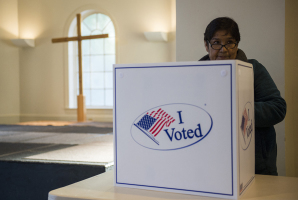One Million Are Starving in Zimbabwe, UN Says
At least 1 million people in Zimbabwe are facing starvation, according to the U.N. World Food Program (WFP).
The southern African nation is in the midst of a drought that threatens to deplete resources and spread a Typhoid outbreak that has infected thousands already.
The WFP is asking for $42 million in donations to supply Zimbabwe with ample food. The “lean season” lasts until March and poor families in the country’s more arid regions are already skipping meals.
Much of the food that is available in the affected regions is too expensive for poor families. Many of these households have children or orphans who are particularly susceptible to starvation.
Up to 12 percent of Zimbabwe’s population is enduring a food shortage.
"Most at risk are low-income families hit by failed harvests, and households with orphans and vulnerable children," the WFP said in a statement. "Although food is generally available in many rural areas, it is too expensive for those with limited resources."
Those areas most at risk – the central and western regions of the country – expect poor crop output until March. Much of the food available in the poor regions of Zimbabwe is shipped in from other countries.
Agricultural woes have plagued Zimbabwe for a decade, after president Robert Mugabe confiscated land from white commercial farmers and re-allocated it to blacks in 2000.
The move crippled the country’s economy. The farms did not produce nearly as much crop as the commercial farmers had and by 2005, the government was asking the white farmers to return.
It was only until this past year that crops began to rebound, albeit slightly, with the country producing 1.45 million tons, compared to 500,000 in 2007. The country needs 2 million tons a year to be self-sufficient, according to the WFP.
The agricultural crisis, combined with drought, famine and corruption, created one of the worst economic crises the modern world has ever seen. At the crisis’s peak in Nov. 2008, Zimbabwe’s inflation rate had reached 516 quintillion percent, with prices doubling nearly every day.




























